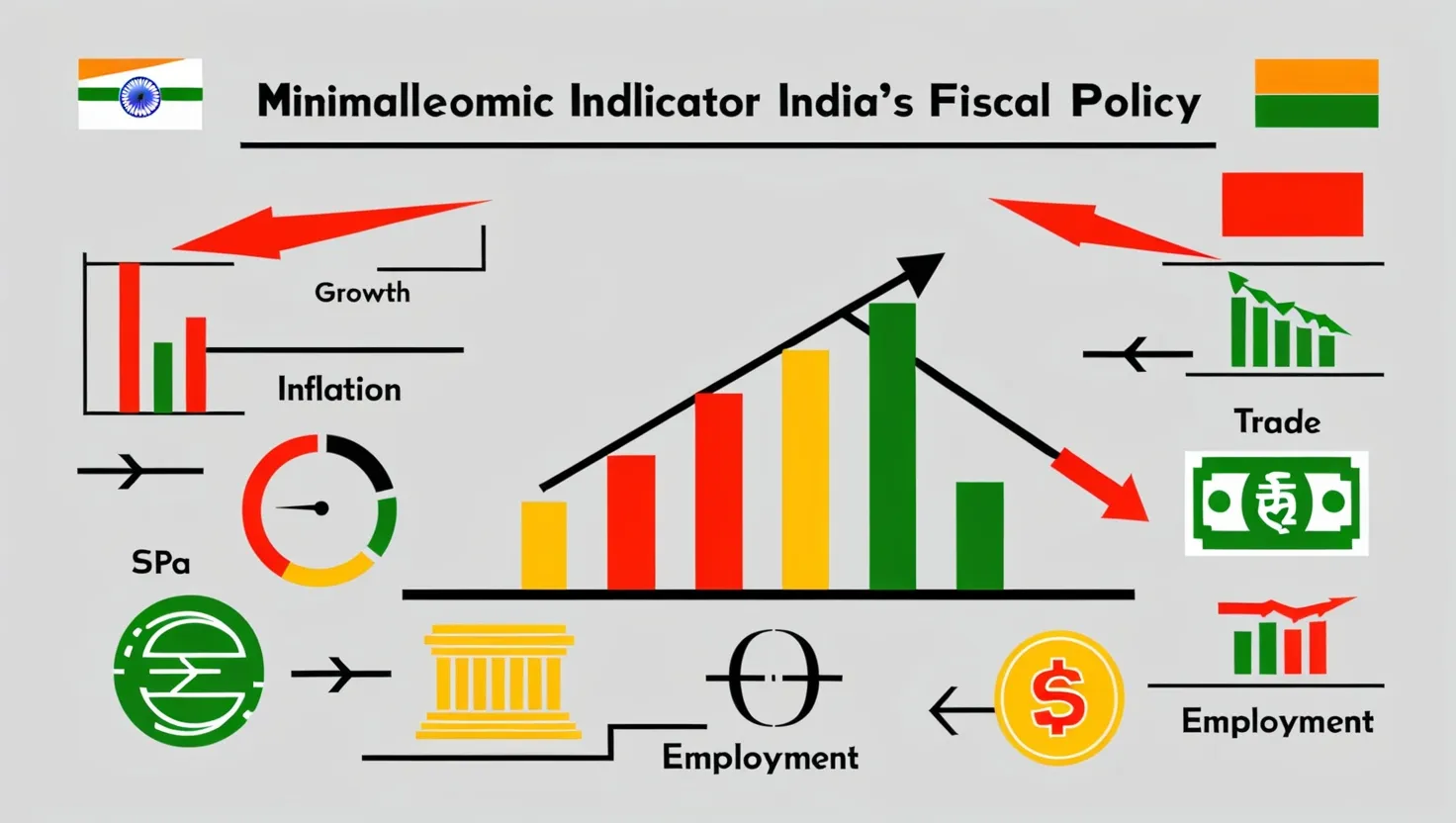As I delve into the intricate world of India’s fiscal policy, it becomes clear that a multitude of economic indicators play a crucial role in shaping the country’s financial strategy. These metrics are not just numbers on a spreadsheet; they are the pulse of the economy, guiding policy-makers in their decisions and influencing the lives of millions.
The GDP Growth Rate: A Barometer of Economic Health
“GDP is not a measure of human well-being, but it is the best measure we have of the size of the economy,” as the economist Paul Samuelson once said. India’s GDP growth rate is a key indicator that sets the tone for budget allocations. A high growth rate signals a robust economy, allowing the government to allocate more resources to various sectors such as infrastructure, education, and healthcare. For instance, India’s real GDP growth rate of 7.3% in the fiscal year 2023-24 has positioned it as one of the fastest-growing major economies globally.
But what does this mean in practical terms? A strong GDP growth rate gives the government the leeway to invest in capital expenditure, which is crucial for long-term growth and infrastructure development. However, it also raises questions: How can this growth be sustained? What sectors should be prioritized to ensure inclusive growth?
Inflation Trends: The Monetary Policy Lever
Inflation is another critical indicator that significantly influences monetary policy. When inflation rises, it erodes the purchasing power of consumers and can lead to economic instability. India’s monetary policy, managed by the Reserve Bank of India, often walks a tightrope between controlling inflation and promoting economic growth.
As the renowned economist Milton Friedman once said, “Inflation is always and everywhere a monetary phenomenon.” In India, the RBI uses tools like interest rates and reserve requirements to manage inflation. For example, if inflation trends indicate a rise above the comfort zone of 4-6%, the RBI might increase interest rates to curb borrowing and spending, thus reducing demand and bringing inflation back under control.
But how effective are these measures? Do they always achieve the desired outcomes without stifling economic growth?
Fiscal Deficit Targets: The Discipline of Fiscal Prudence
Fiscal deficit targets are a cornerstone of India’s economic planning, reflecting the government’s commitment to fiscal discipline. The Fiscal Responsibility and Budget Management Act (FRBMA) of 2003 has been instrumental in reducing India’s fiscal deficit over the years. The act aims to eliminate the revenue deficit and bring the fiscal deficit to a manageable 3% of GDP.
However, achieving these targets is not without its challenges. The government often faces the dilemma of balancing fiscal prudence with the need to stimulate economic growth. For instance, the ambitious fiscal deficit target of 4.9% of GDP for FY25 may be challenging due to underperformance in capital expenditure, a key driver of long-term growth.
As the former Indian Finance Minister, P. Chidambaram, once noted, “Fiscal discipline is not an end in itself, but a means to an end.” The end being sustainable economic growth and improved public services.
Foreign Exchange Reserves: The Shield for the Rupee
Foreign exchange reserves are a vital indicator of a country’s economic stability, particularly in stabilizing the currency. India’s robust foreign exchange reserves, which reached USD 683 billion in October 2024, provide a buffer against external shocks and help maintain the value of the rupee.
But why are these reserves so crucial? Imagine a scenario where global economic conditions deteriorate, and there is a sudden outflow of foreign capital. Strong foreign exchange reserves act as a shield, allowing the government to intervene in the forex market and stabilize the currency.
As the IMF has noted, India’s strong foreign reserves are a promising indicator of fiscal stability. However, how do these reserves compare to global benchmarks? Are they sufficient to weather any potential economic storms?
Current Account Balance: The Trade Policy Compass
The current account balance is another significant indicator that influences trade policies. A current account deficit, which occurs when a country imports more than it exports, can put pressure on the currency and affect economic stability. India’s efforts to reduce the current account deficit to 1.4% of GDP are a step in the right direction, supported by robust foreign exchange reserves.
But what does this mean for trade policies? A balanced current account suggests that India is managing its trade relationships effectively, which can lead to stronger trade partnerships and enhanced economic growth.
As the World Bank has emphasized, trade is a pillar of sustained growth. How can India leverage its trade policies to further boost its economic growth?
Employment Data: The Social Welfare Gauge
Employment data is a critical indicator that impacts social welfare schemes. India’s employment landscape is complex, with a large informal sector and varying levels of unemployment across different regions.
The government’s social welfare schemes, such as the Mahatma Gandhi National Rural Employment Guarantee Act (MGNREGA), are designed to provide a safety net for the unemployed. However, the effectiveness of these schemes depends on accurate employment data.
But how accurate is this data? The challenges in data collection and interpretation are significant, especially in a country with a vast informal sector. How can policy-makers ensure that their decisions are based on reliable data?
As the economist Amartya Sen once said, “Economic development is not just about increasing income; it is about expanding the choices and opportunities available to people.” Employment data is crucial in understanding these choices and opportunities.
The Challenges and Comparisons
Collecting and interpreting these economic indicators is not without its challenges. Data collection in India, especially for employment and inflation, can be cumbersome due to the large informal sector and regional disparities.
How do these indicators compare to global benchmarks? India’s GDP growth rate, for instance, is among the highest globally, but its fiscal deficit targets are more challenging compared to some developed economies.
As we navigate these complexities, it is essential to remember that economic indicators are not just numbers; they are the stories of people, businesses, and communities. They guide policy-makers in their decisions and influence the trajectory of the economy.
In conclusion, India’s fiscal policy decisions are a delicate balance of various economic indicators. Each indicator plays a unique role, and understanding their interplay is crucial for sustainable economic growth. As we look to the future, it is clear that these metrics will continue to shape India’s financial strategy, guiding the country towards a more prosperous and stable economic future.
And so, the question remains: How will India balance these indicators to achieve its economic goals? Only time will tell, but one thing is certain – the journey will be fascinating, filled with challenges and opportunities that will define the economic landscape of India.






